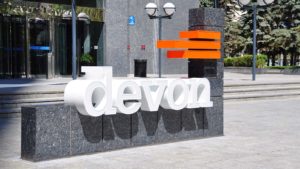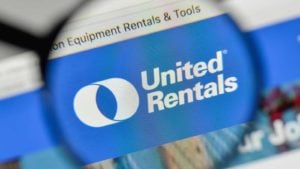
Everyone’s definition of a must-buy stock is different.
I remember writing about Church & Dwight (NYSE:CHD) in 2016 when it was on one heck of a heater, as they say in sports—up 9% year to date (YTD) through April, working on its 11th consecutive year of market gains.
I suggested it was still a buy despite gaining 411% over the previous decade. It proceeded to gain another 121% over the next five years. That was a must-buy stock. It’s since cooled off, but if its Q3 2023 results indicate, it’s about to heat up again.
So, what stocks should you buy hand over fist right now? Well, that depends on your opinion of whether stocks are overvalued or not.
The Business Insider recently reported that several billionaires believe U.S. stocks are overpriced. Jeremy Grantham thinks the S&P 500 will fall by as much as 50%. However, Wharton finance professor Jeremy Siegel thinks the opposite is true, given the current earnings yield of 6%.
“Stocks are still priced for much better long-term returns and a 3% equity premium, while lower than it was for last decade, does not mean stocks are above fair value. They are now underpriced in my estimation,” CNBC reported Siegel’s comments.
Therefore, let’s explore stocks to buy with an earnings yield above 6%.
PulteGroup (PHM)

PulteGroup (NYSE:PHM) has bounced back nicely in 2023, up nearly 90% on the year, after losing 20% of its value in 2022. However, over the past five years, it’s up a whopping 237%, not too far off Apple’s (NASDAQ:AAPL) return.
In Q2 2023, Warren Buffett took up positions in three of PHM’s competitors. Those included D.R. Horton (NYSE:DHI), Lennar (NYSE:LEN), and NVR (NYSE:NVR). He did so because of the housing shortage in this country. Increasing the housing supply is the only way housing affordability will return to the marketplace.
In fact, PulteGroup is the third-largest homebuilder in the U.S., with homes in 40 major markets. Since its founding more than 70 years ago, it’s delivered nearly 800,000 homes. As of Q3 2023, it had a backlog of 13,547 homes worth an estimated $8.13 billion.
While the backlog is smaller than in previous quarters, its net new orders continue to grow like weeds. In Q3, they were 7,065, 43% higher year over year (YOY), with an average sales price of $549,000.
PulteGroup has a rock-solid balance sheet with a net debt-to-capital ratio of less than 1%. It will likely take years for the housing supply to catch up with demand.
Devon Energy (DVN)

Devon Energy (NYSE:DVN) stock is down 34% over the past year. As a result, its dividend yield has increased to a very high 9.3%.
Recently, Devon was included in a trio of energy stocks to buy for income, after it reported Q3 2023 earnings. On the top line, it missed analyst expectations by $190 million. However, on the bottom line, it earned $1.65 a share on an adjusted basis, 9 cents better than the consensus.
Production is up, pushing free cash flow higher. It expects to generate $3.2 billion in free cash flow in 2024. Its profit margin remains high with a $40 breakeven and prices around $76. Based on an enterprise value of $34.7 billion, it has a free cash flow yield of 9.2%.
The company remains one of the top acquisition targets of the large integrated oil and gas companies other than Exxon Mobil (NYSE:XOM) and Chevron (NYSE:CVX).
United Rentals (URI)

United Rentals (NYSE:URI) owns an impressive $21 billion fleet of equipment. It rents out to businesses to get their projects completed, giving it the top market share in the U.S. at 17%. Approximately 52% of its customers are construction-related businesses. The other 48% are industrial businesses such as utilities and manufacturing.
Founded in 1997, United has steadily grown its specialty business over the past decade. In 2012, the division’s revenue was $297 million. Fast forward to 2022, it was more than 10x at $3.45 billion. With 569 specialty locations worldwide, it accounts for nearly 30% of the company’s overall revenue, up from 7.2% a decade ago.
As a result of the ongoing growth of residential and non-residential construction, United’s revenue’s compound annual growth rate (CAGR) over the past five years was 11.9%. In 2023, it’s expected to be 22.0%. And, its adjusted earnings per share have grown 25.1% annually over the past five years, more than double the S&P 500.
Further, since going public in 1997, it’s generated a cumulative return of 2,908%, a 13% CAGR.
On the date of publication, Will Ashworth did not have (either directly or indirectly) any positions in the securities mentioned in this article. The opinions expressed in this article are those of the writer, subject to the InvestorPlace.com Publishing Guidelines.




